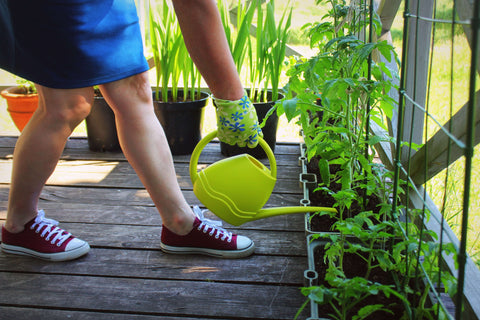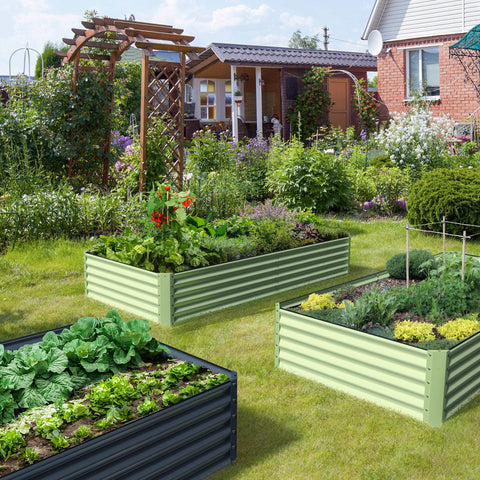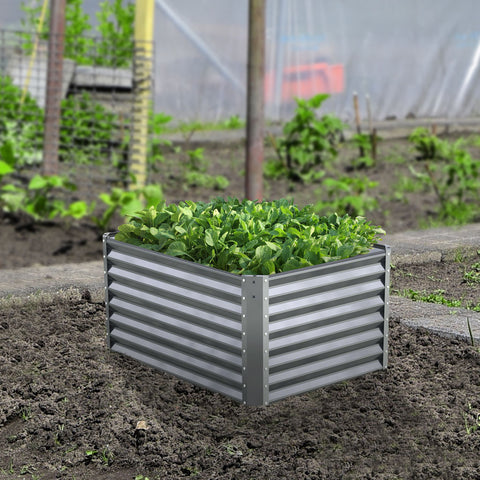When you want to create a new planting bed, lasagna gardening (also known as composting) is an easy way to get started - no digging required. Like the pasta dish it's named for, this technique requires adding layers in the right order. Start with newspaper or cardboard, then top with brown and green yard and garden waste, such as grass clippings and chopped up fallen leaves. Over time, microbes turn all of this into fertile soil. Your lasagna garden will be ready for planting about 6 to 12 months after the last layer is added.

How to Start a lasagna Garden
While making lasagna requires a lot of preparation and cleanup, lasagna gardening is just the opposite. No preparation is required other than clearing the rocks and debris that will become the garden. You don't need to worry about tilling or turning the soil. (You're welcome to turn the soil with a spade to speed up the composting process for a few months, but it's not required.)
When choosing the location of your lasagna garden, take into account the amount of sunlight reaching the land and what you want to grow in your bed. Vegetables and herbs grow best in direct sunlight for 8 hours a day. Flowering plants also thrive in bright sunlight for at least six hours a day.

When do you make the lasagna garden
Fall is the best time to start your lasagna garden, as you can take advantage of winter's freeze-thaw cycle to help break down layers. In addition, rain or snow will help keep the layers moist during the colder months, which encourages them to break down more quickly. However, you can start composting any time you have materials on hand.
Add layers of organic material
The key to a lasagna garden is the layers. A base of newspaper or cardboard is formed to cover existing grass and prevent weeds (4 to 6 sheets of newspaper or a single layer of cardboard). Newspaper or cardboard will prevent light from reaching the plants below, preventing their growth. Soak the paper layer thoroughly to start decomposition and help it stay in place.

Just as quality ingredients will affect the final taste of your favorite dish, the best composting materials will create the most nutrient-rich garden soil. Line the bottom of the paper or cardboard with a 2-inch thick layer of carbon-rich "brown" material, such as chopped leaves, straw, sawdust, wood ash, sawdust, and pine needles. The smaller or finer the material is cut, the faster it will decompose.
8 Common composting Mistakes You might be Making (and how to fix them)
Add a 2 "green" layer on top of the brown. The composition of this layer may be grass clippings, kitchen scraps of fruit and vegetables, rotten horse or cow manure, coffee grounds and garden decorations. The color doesn't matter, what matters is that the material contains moisture instead of being dry and crispy like brown materials.

Continue layering the 2-inch green on top of the 2-inch brown layer until the height of your new bed is between 18 inches and 3 feet. As materials break down, they shrink a lot. To complete the edge, surround your lasagna garden with stones or bricks. If you want to create a raised bed in the space, add strong wooden planks around your layers.
How long does it take to grow lasagna?
Microbes and earthworms work on the lasagna, and it can take up to a year to turn organic debris into nutrient-rich soil. The exact time depends on several factors, including the size of the compost pieces, temperature and humidity. But the good news is, all you have to do is sit back and wait.
A lasagna garden can be planted when the compost material is no longer recognizable. The leaves, grass clippings and other ingredients all look like loose, black-brown soil, ready for a shovel. Now you can grow as many vegetables, herbs and flowers as you like.









